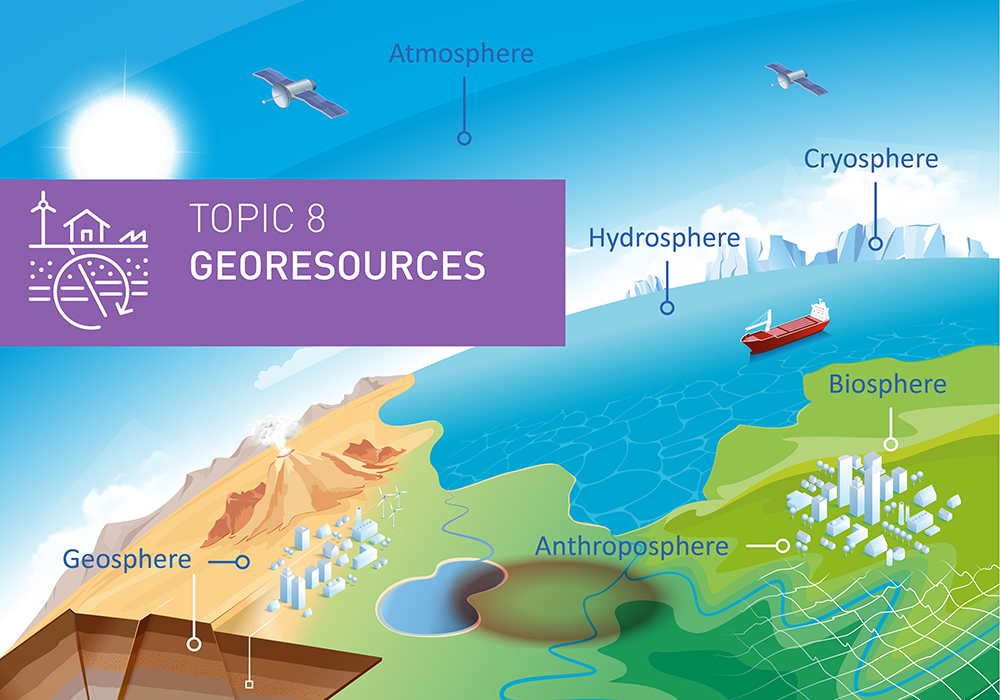Topic 8: Georesources – energy and raw materials for future societies

“We want to prepare the scientific foundations on which the clean energy and resources needed to complete the energy transition and support the circular economy can be obtained.”
Sarah A. Gleeson, Helmholtz Centre Potsdam – GFZ German Research Centre for Geosciences, Speaker Topic 8How can a rapidly growing world population meet its future needs for energy and raw materials without harming the Earth system? This question is more topical than ever, because oil, natural gas, and coal are still the largest sources of energy, even today, covering 70 percent of the world’s energy requirements. Germany, too, remains heavily dependent on fossil fuels despite the energy transition, which began in 2011. Another problem is that exploiting georesources will become increasingly expensive in the future.
For example, to access the mineral resources we need for the energy transition and our high-tech society, we will have to penetrate ever deeper into the interior of the Earth. Accordingly, in addition to using raw materials more sustainably and strengthening the circular economy, we will need more efficient methods of extraction.
We carry out studies into the structure of the upper layer of the Earth’s crust and its chemico-mineralogical composition, and we investigate how it changes over different time periods. This is the only way we can discover where metals and energy resources can be found and how they can be used sustainably.
We also develop new concepts and models to harness geothermal energy for the supply of heat and power or to locate valuable raw materials and improve our understanding of how they form on dry land and in the oceans. Resources like copper, zinc, or rare earth metals are found deep underground; sulfides and manganese nodules are formed on the seabed. Another area we want to investigate is how carbon dioxide or hydrogen, for example, can be stored reliably and sustainably under the ground. In order to optimize storage and energy generation, we are developing new 4D Earth models that can be used to analyze physical properties and processes that occur deep underground over the course of time. As a result, we are also making a contribution toward the safe storage of radioactive waste.
The solutions for a future energy mix must be reliable, environmentally friendly, and economically efficient. We aim to use our research findings to advise policymakers before they make decisions on how resources might be better used and managed in the future.